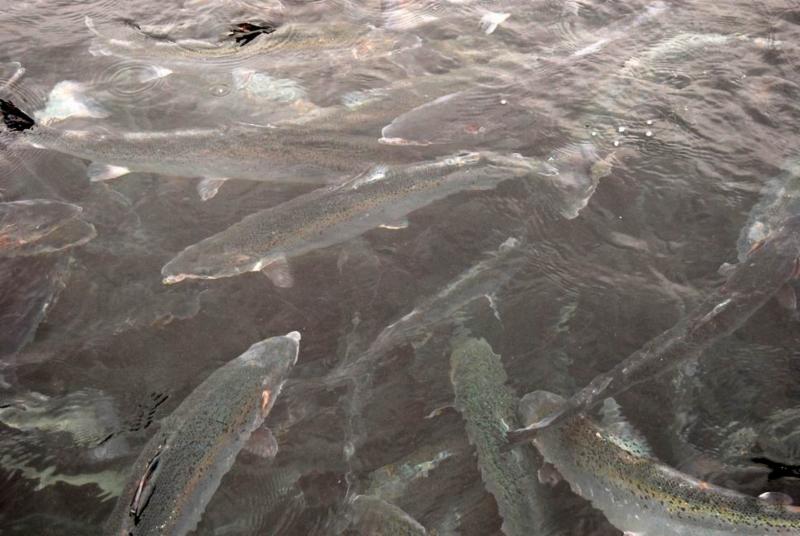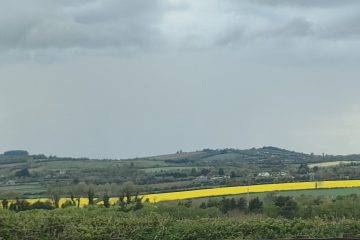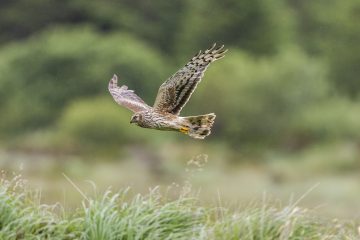Our nationwide biodiversity blanket: The hedgerow and its role on the farm

July 5th, 2018
The controversial Heritage Bill has passed through the final stage of the Dáil last night.
The Bill, which must first return to the Seanad and be signed by the President before it can become law, seeks to introduce a nationwide pilot measure allowing for managed hedge-cutting of roadside hedges during August to tackle issues such as overgrown hedges impacting on roads.
Section 7 of the Bill will also allow for the controlled burning of vegetation – to be specified by regulation – during the month of March.
It is currently an offence under the Wildlife Act to cut hedges and burn any vegetation growing on any land not then cultivated from 1 March to 31 August.
Opposition politicians and environmental groups, such as BirdWatch Ireland, oppose the Bill, arguing that it would have a detrimental effect on wildlife and their habitats.
Hedges appear in gardens, fields, farms and roadsides all across the country. They have many values and can be multi-functional, often playing an important role in supporting biodiversity.
They also play an important role on the farm.
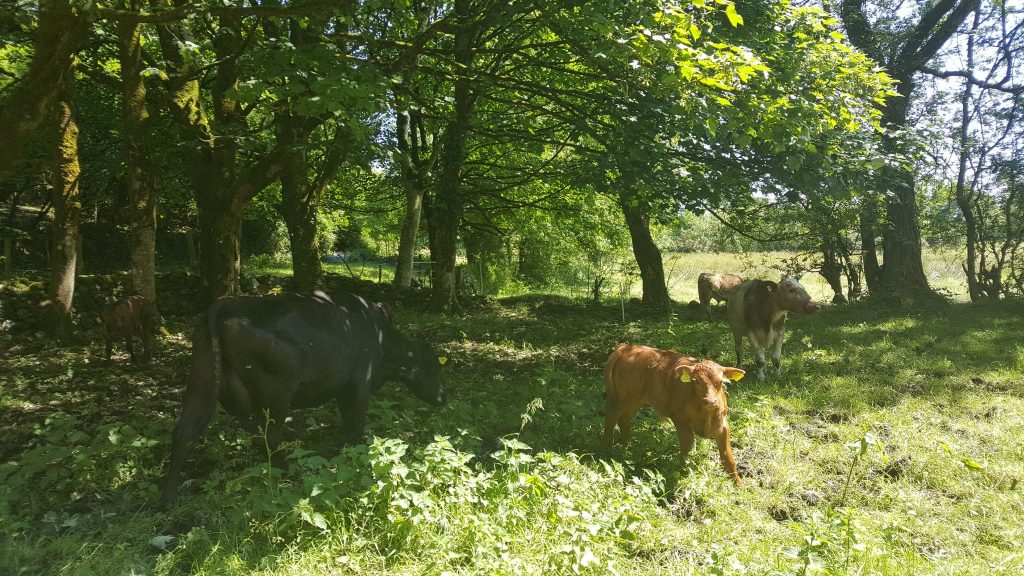
Cattle taking shade under trees during summer heatwave 2018 Photo: Sinead Moran
Value of Hedgerows
Hedgerows are an important farmland feature, providing valuable protection for livestock and crops and shade for animals in hot weather such as the current heatwave.
Hedgerows also help prevent flooding as their root systems help regulate water movement which can control the flow of large bodies of water.
Sinead Moran, a conservationist Farmer in Co Mayo and co-founder of Foodture, told The Green News that here hedgerows have been “invaluable” during the heatwave as livestock spend their time “chewing the cud under the cool shade of trees”.
Her 17 acre High Nature Value (HNV) farm is divided up into ten different size paddocks, she said, “each with tree-lined, thick hedgerows.”
Hedgerows also act as a wildlife habitat that provides food, nest and hibernation sites for wildlife and livestock. Ms Moran said that her cows eat leaves and the “species-rich grass” from the hedges which ensures that they have a “diverse diet”.
Ms Moran explained that large mature trees offer “both shelter and shade” on her farm which ensures she has a “home for biodiversity”.
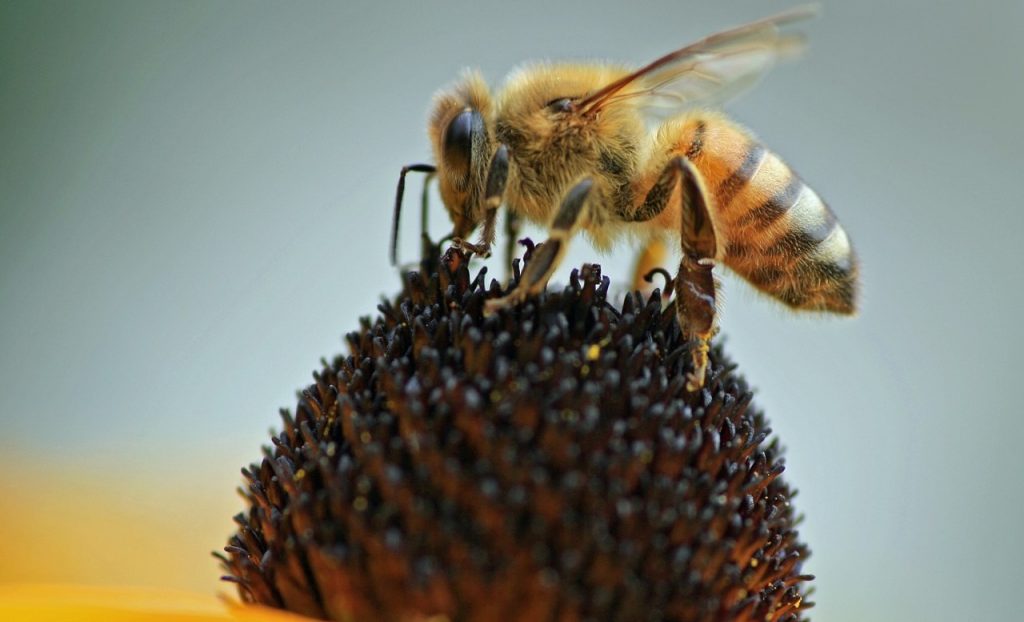
Honeybee Photo: skeeze/Pixabay
Nationwide biodiversity blanket
According to Teagasc, of the 110 species regularly recorded in the Countryside Bird Survey in Ireland during the breeding season, 55 use hedgerows. Of these, 35 species nest in hedgerows which provide cover from overhead and ground predators.
Hedgerows with a dense base provide cover for small birds and mammals such as the hedgehog and the field mouse. Hedgerow trees also provide roosts for bats, while saplings just above the height of the hedgerow are important perching posts for birds.
Bees also benefit from the presence of hedgerows. When it comes to hedges, many species of shrub are ideal for pollinators as they can collect their food in a more efficient way. As the shrubs grow in masses, bees can simply move from one flower to the next without spending a lot of energy on flying.
The network of hedgerows also allows wildlife to move safely and quickly through the countryside as birds, bats, butterflies and bees travel along hedgerows, rather than cross open fields where they are at risk from predators and humans alike.
Hedgerows also reduce the amount of carbon in the atmosphere. A 2014 report from the Environmental Protection Agency found that the expansion of Irish hedgerows could make a very significant contribution towards achieving Ireland’s carbon emissions targets.
As farmers we want to do our bit for the environment, improve biodiversity and save our threatened pollinators – help create a positive image with our food consumers. Vote no to the #HeritageBill and save our hedgerows and upland habitats. pic.twitter.com/ngL9H3sHzf
— Donal Sheehan (@DonalSheehan4) July 3, 2018
Improving Biodiversity
In East Cork, the Farming with Nature Bride Project provides farmers with wildlife management options for individual farms and provides incentives to farmers with a large habitat.
Donal Sheehan, one of the farmers behind the project, told The Green News that hedges play an important role in protecting biodiversity, acting as a carbon sink and providing shade to livestock.
Speaking on Radio One last week Mr Sheehan said that the message of the project is that you can “produce food and also manage your farm for biodiversity”. He added that most farmers want to improve their biodiversity but often lack direction and management.
Incentives are also generally lacking to encourage farmers to take big steps to enhance biodiversity on farms, with many taking a financial hit to support the flora and fauna on their land.
In Ms Moran’s case, she says that it would have been more financially rewarding to plant non-native Sitka trees on her 17 acres. Despite this, she continues to act as a conservationist on the farm, protecting and improving what they already have.
“Last year we took part in Tress on the Land and planted 50 native trees into gaps along our boundaries. A fantastic initiative for those who want to bring back trees to their farm,” she added.
[x_author title=”About the Author”]


